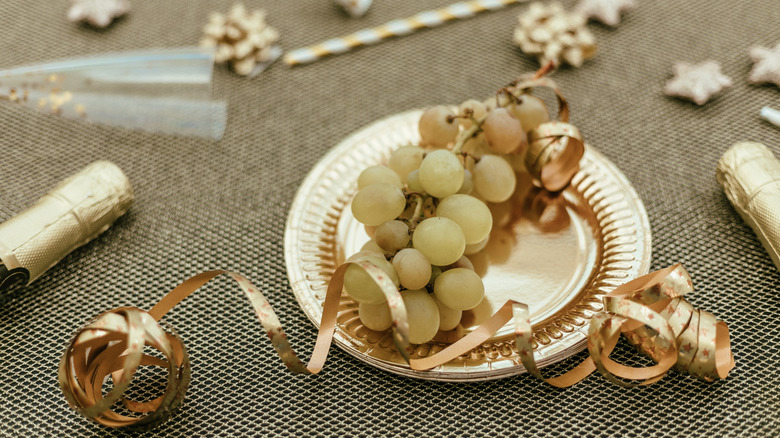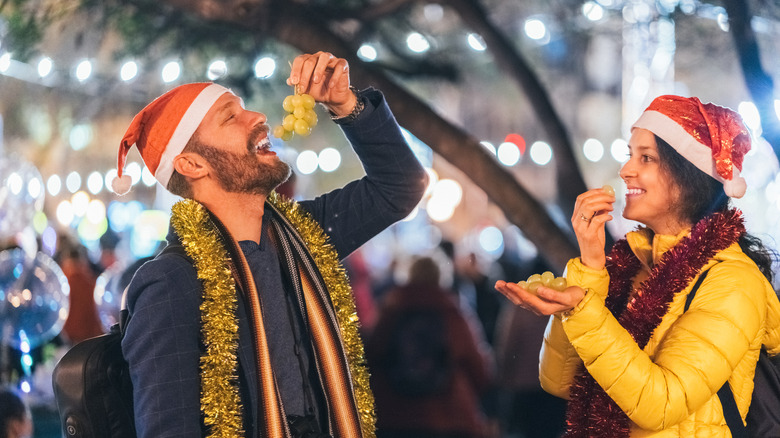Why You Need A Bag Of Grapes For Your New Year's Eve Celebration
Every New Year means new aspirations, and if you need a little luck to help you get there, why not get as much as you can? This is where New Year traditions come into play. Some people might circle their block with a suitcase in hopes of becoming well traveled while others stuff their face with 12 grapes at the stroke of midnight.
A mouthful of grapes might not sound like the classiest way to toast the New Year, but it's actually a long-standing tradition that dates back to the late 1800s in Spain. The tradition is referred to as uvas de la suerte, or grapes of luck, throughout Spain and Latin America. When done correctly, the tradition signifies a fruitful year ahead, with the grapes coinciding with each month of the year and each chime of the clock at midnight.
But before you ransack your nearest produce supplier, it's important to learn how this lucky grape custom came to be and how to get it right. Whether you're superstitious or not, failing to follow procedure is no way to kick off a successful New Year.
The history of eating grapes on New Year's Eve
Two arguable origins for uvas de la suerte exist, but the first is said to have started around the 1880s in Madrid. The bourgeoisie of Madrid looked to French traditions of drinking champagne and eating grapes as they rang in the New Year. This was done to copy (but also to mock) the upper class. However, in the early 1900s, another story popped up which connected the idea of luck to the tradition while helping to popularize it throughout Latin America. Grape farmers in Alicante, Spain had a booming harvest and came up with a creative way to get their bunches sold.
To get the optimal amount of luck out of the grapes, New Year celebrants must eat each one at each chime of the clock at midnight and think specifically about each month of the year as they do it. Failing to conscientiously consume each of the 12 grapes within the number of chimes will actually result in bad luck for the year. Spaniards specifically eat white Aledo grapes which are grown in Alicante, have a ripe, soft skin (making them easier to eat quickly), and are sold in 12-packs.
Of course, if fruit on a vine isn't your thing, there are plenty of other foods meant to bring you luck in the New Year. For example, you could get briny and down some pickled herring for Norwegian luck. You could also learn the Korean way to celebrate Lunar New Year. Whatever lucky method you choose, be sure your celebration is filled with enough food and fun to last all year long.

